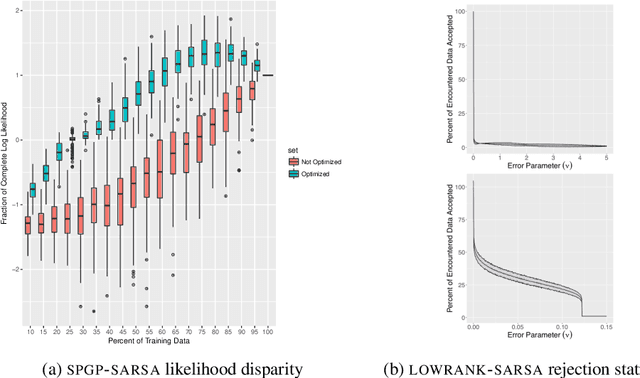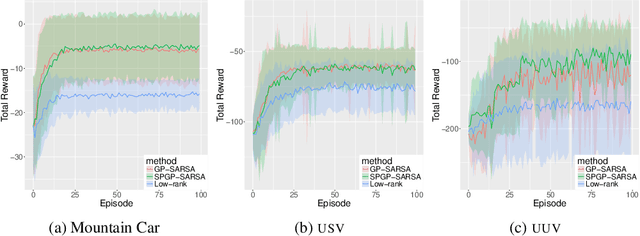John Martin
The Physics-Informed Neural Network Gravity Model: Generation III
Dec 15, 2023Abstract:Scientific machine learning and the advent of the Physics-Informed Neural Network (PINN) show considerable potential in their capacity to identify solutions to complex differential equations. Over the past two years, much work has gone into the development of PINNs capable of solving the gravity field modeling problem -- i.e.\ learning a differentiable form of the gravitational potential from position and acceleration estimates. While the past PINN gravity models (PINN-GMs) have demonstrated advantages in model compactness, robustness to noise, and sample efficiency; there remain key modeling challenges which this paper aims to address. Specifically, this paper introduces the third generation of the Physics-Informed Neural Network Gravity Model (PINN-GM-III) which solves the problems of extrapolation error, bias towards low-altitude samples, numerical instability at high-altitudes, and compliant boundary conditions through numerous modifications to the model's design. The PINN-GM-III is tested by modeling a known heterogeneous density asteroid, and its performance is evaluated using seven core metrics which showcases its strengths against its predecessors and other analytic and numerical gravity models.
Predicting Long-term Renal Impairment in Post-COVID-19 Patients with Machine Learning Algorithms
Sep 28, 2023



Abstract:The COVID-19 pandemic has had far-reaching implications for global public health. As we continue to grapple with its consequences, it becomes increasingly clear that post-COVID-19 complications are a significant concern. Among these complications, renal impairment has garnered particular attention due to its potential long-term health impacts. This study, conducted with a cohort of 821 post-COVID-19 patients from diverse regions of Iraq across the years 2021, 2022, and 2023, endeavors to predict the risk of long-term renal impairment using advanced machine learning algorithms. Our findings have the potential to revolutionize post-COVID-19 patient care by enabling early identification and intervention for those at risk of renal impairment, ultimately improving clinical outcomes. This research encompasses comprehensive data collection and preprocessing, feature selection, and the development of predictive models using various machine learning algorithms. The study's objectives are to assess the incidence of long-term renal impairment in post-COVID-19 patients, identify associated risk factors, create predictive models, and evaluate their accuracy. We anticipate that our machine learning models, drawing from a rich dataset, will provide valuable insights into the risk of renal impairment, ultimately enhancing patient care and quality of life. In conclusion, the research presented herein offers a critical contribution to the field of post-COVID-19 care. By harnessing the power of machine learning, we aim to predict long-term renal impairment risk accurately. These predictions have the potential to inform healthcare professionals, enabling them to take proactive measures and provide targeted interventions for post-COVID-19 patients at risk of renal complications, thus minimizing the impact of this serious health concern.
Long-term Neurological Sequelae in Post-COVID-19 Patients: A Machine Learning Approach to Predict Outcomes
Sep 15, 2023Abstract:The COVID-19 pandemic has brought to light a concerning aspect of long-term neurological complications in post-recovery patients. This study delved into the investigation of such neurological sequelae in a cohort of 500 post-COVID-19 patients, encompassing individuals with varying illness severity. The primary aim was to predict outcomes using a machine learning approach based on diverse clinical data and neuroimaging parameters. The results revealed that 68% of the post-COVID-19 patients reported experiencing neurological symptoms, with fatigue, headache, and anosmia being the most common manifestations. Moreover, 22% of the patients exhibited more severe neurological complications, including encephalopathy and stroke. The application of machine learning models showed promising results in predicting long-term neurological outcomes. Notably, the Random Forest model achieved an accuracy of 85%, sensitivity of 80%, and specificity of 90% in identifying patients at risk of developing neurological sequelae. These findings underscore the importance of continuous monitoring and follow-up care for post-COVID-19 patients, particularly in relation to potential neurological complications. The integration of machine learning-based outcome prediction offers a valuable tool for early intervention and personalized treatment strategies, aiming to improve patient care and clinical decision-making. In conclusion, this study sheds light on the prevalence of long-term neurological complications in post-COVID-19 patients and demonstrates the potential of machine learning in predicting outcomes, thereby contributing to enhanced patient management and better health outcomes. Further research and larger studies are warranted to validate and refine these predictive models and to gain deeper insights into the underlying mechanisms of post-COVID-19 neurological sequelae.
Recursive Sparse Pseudo-input Gaussian Process SARSA
Nov 17, 2018
Abstract:The class of Gaussian Process (GP) methods for Temporal Difference learning has shown promise for data-efficient model-free Reinforcement Learning. In this paper, we consider a recent variant of the GP-SARSA algorithm, called Sparse Pseudo-input Gaussian Process SARSA (SPGP-SARSA), and derive recursive formulas for its predictive moments. This extension promotes greater memory efficiency, since previous computations can be reused and, interestingly, it provides a technique for updating value estimates on a multiple timescales
Sparse Gaussian Process Temporal Difference Learning for Marine Robot Navigation
Oct 02, 2018



Abstract:We present a method for Temporal Difference (TD) learning that addresses several challenges faced by robots learning to navigate in a marine environment. For improved data efficiency, our method reduces TD updates to Gaussian Process regression. To make predictions amenable to online settings, we introduce a sparse approximation with improved quality over current rejection-based sparse methods. We derive the predictive value function posterior and use the moments to obtain a new algorithm for model-free policy evaluation, SPGP-SARSA. With simple changes, we show SPGP-SARSA can be reduced to a model-based equivalent, SPGP-TD. We perform comprehensive simulation studies and also conduct physical learning trials with an underwater robot. Our results show SPGP-SARSA can outperform the state-of-the-art sparse method, replicate the prediction quality of its exact counterpart, and be applied to solve underwater navigation tasks.
 Add to Chrome
Add to Chrome Add to Firefox
Add to Firefox Add to Edge
Add to Edge